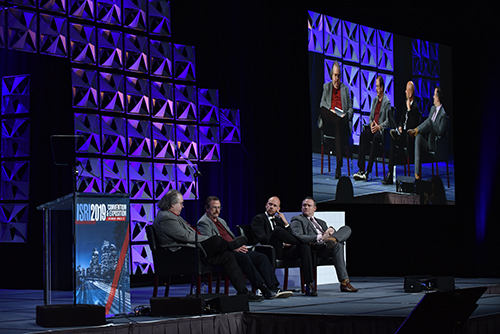Spotlight on Nickel/Stainless
Nickel demand continues to remain strong from its major end user—stainless steel production—but electric vehicle batteries are a rapidly growing sector for nickel demand, according to speakers at the Spotlight on Nickel/Stainless. Battery demand predictions vary and depend on how quickly the public adopts EVs, said Barry Jackson, principal market intelligence analyst, nickel and stainless steel, at Anglo American.
The batteries in an EV last about five to seven years, but some of them find a second life as residential solar energy storage. "There's a lot of focus on... when the batteries for these cars need to be recycled," Jackson said. Current volumes of the batteries are so small that processing infrastructure investments "are not justified at the moment," but they could become so after about 2025, said Marcus Moll, managing director at SMR.
Indonesia's rapid and significant stainless steel production increase over the past year has had a profound market effect and has altered global trade flows, speakers said. The influx of material has contributed to stainless steel markets "underperforming" at only 2.7% worldwide growth, compared with the historic 5 percent to 6 percent growth, Moll says. He notes that the market could experience further challenges in 2019 because global consumer confidence has dipped and about 48% of stainless steel goes to consumer goods.
There is a bright spot for stainless scrap: "For those of you ... selling to domestic mills, it will be a good year. It's one of the best performing markets," Moll says.
Spotlight on Aluminum
The many factors that create uncertainty in aluminum markets likely won't let up anytime soon, according to speakers at the Aluminum Spotlight. "We think aluminum prices will remain choppy for the next 18 to 24 months," said Jason Schenker, president of Prestige Economics and chairman of The Futurist Institute.
Tariffs, changes in automotive manufacturing, and mills' demand for higher quality materials are among the factors creating market volatility. Government legislation and policy changes—especially policies announced suddenly on social media—play an increasing role in a marketplace that used to solely rely on supply and demand, said Andy McKee, president of materials trading at Schupan & Sons. The prolonged nature of this instability prompts some analysts to ask if this way of doing business is the new normal. In addition to "a strong shift" in supply and demand, "gone are the days when you were looking at strictly utilization, capacity, and margin," said Stephen Deacon, president of nonferrous at EMR.
The automotive industry drives change in the aluminum market through the use of different aluminum alloys and the volume of metal used in auto production, thus that industry's output weighs heavily on aluminum markets both domestically and globally. Continued weakness in the automotive sector is affecting the demand for secondary aluminum. "It's such a volatile market that it's very difficult for us to give a longer-term view ... Being shallow is unfortunately where we're at right now," says Richard Mayenknecht, global aluminum category director at Nemak.

Spotlight on Copper
With manufacturing in China and Europe contracting in late 2018 and early 2019, and prospects for slower worldwide growth this year, conditions are “choppy” for copper prices, said Jason Schenker of Prestige Economics (Austin, Texas). He pegged copper prices to remain in the $2.75 to $3.20 range for the next 18 months.
China’s exit from some copper scrap markets will lead to more U.S. copper consumption and manufacturing of copper-containing products, predicted Tim Strelitz, president of brass and bronze ingotmaker California Metal-X (Los Angeles). But China could always reenter the copper scrap market, he noted. Schenker said China is not yet self-sufficient in its supply of copper scrap and will not be for “quite some time.” Moderator Randy Goodman of Greenland (America) (Roswell, Ga.) also said he believes the flow of scrap will continue to China, perhaps with the country reclassifying furnace-ready material as something other than scrap.
The panelists named several barriers to the return of U.S. secondary copper smelting: the two- to three-year startup time, questionable ROI, permitting challenges, interstate transportation costs that can be higher than export costs, and the “tragedy of Chemetco,” Strelitz said. “Because of that [facility becoming a Superfund site], permitting for a secondary smelter or refinery is tougher.” His company, CMX, recently purchased and is about to restart the former Colonial Metals ingotmaking facility in Pennsylvania.
Chinese export restrictions and tariffs have resulted in more U.S. investment in equipment to upgrade scrap and is stimulating processors to be more creative, said Jurgen Van Gorp, raw materials account manager for Metallo Belgium (Beerse, Belgium). Strelitz agreed that “remaining profitable is a function of being innovative and recognizing where the industry is going.”